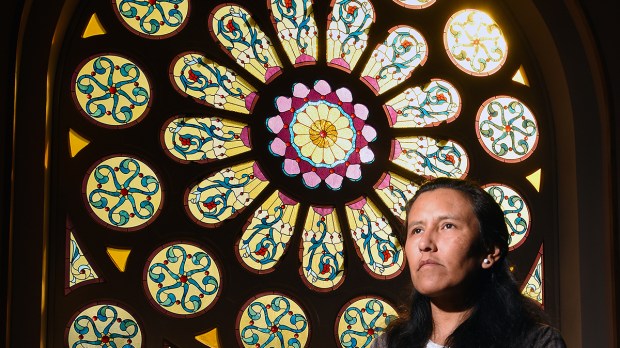“Sanctuary! Sanctuary!”
If you’ve read Victor Hugo’s novel The Hunchback of Notre Dame – or seen the classic 1939 film adaptation starring Charles Laughton, or the very faithful 1996 Disney animated musical version – you’ll recognize this dramatic cry.
Quasimodo, the misshapen and monstrous bell-ringer of the Paris cathedral, has just swooped down from the belfry to seize the unjustly condemned Gypsy, Esmeralda, from the fiery stake. Quasimodo stands on the cathedral balcony, crying “Sanctuary! Sanctuary!” He is invoking an age-old protection offered by churches – refuge from the law for criminals.
This week’s news features a modern-day Esmeralda, an undocumented woman seeking sanctuary from deportation in a US church. As NPR’s Joel Rose reported:
Jeanette Vizguerra walked into a Colorado church on Wednesday — and into the forefront of a possible clash between Donald Trump and sanctuary churches across the country. Vizguerra has lived in the U.S. since 1997. She has four children, three of them born here. Vizguerra was due to check in with Immigration and Customs Enforcement. Instead, she took sanctuary inside the First Unitarian Society of Denver. “I did not make this decision lightly,” Vizguerra said through an interpreter during a news conference at the church. “I was thinking about it for weeks. But I think that I made the right decision in coming here, instead of going to the immigration office today. ” Vizguerra may be the first immigrant to seek sanctuary in a church since the Trump administration took office, but she likely won’t be the last. Across the country, dozens of churches and other faith communities say they’re preparing to offer sanctuary to immigrants who are in the country illegally.
What is church sanctuary? Is it related to so-called “sanctuary cities”? Does it still have the legal force it had in Quasimodo’s day? Here’s a quick primer:
Church sanctuary: The protection of a holy place
The “right of asylum” – protection offered to refugees, persecuted people, even (under some circumstances) those condemned by the law for crimes like murder – has been a part of many human societies from the earliest times. Those fleeing often sought safety in temples, shrines, or other “sanctuaries,” a word that means “holy place.”
The Church recognized the right of asylum from the beginning. In the Christian nations of Europe, sanctuary was written into law by the early Middle Ages. Generally speaking, all churches offered some level of sanctuary, but churches under the protection of the crown – such as Notre Dame in Paris and Westminster Abbey and York Minster in England – were especially safe from legal interference.
Medieval church sanctuary required, in most cases, that the person seeking sanctuary from prosecution appear on the church doorstep to formally request it. (Variations included placing one hand on the altar or on a “sanctuary cross” located on or near the church grounds.) He or she then surrendered any weapons and, if sanctuary was granted, entered into the church to live. During the period of sanctuary, the person had 30 to 40 days to decide whether he or she would surrender to authorities and face trial or plead guilty. Those who pled guilty were required to confess their sins and leave the country immediately, on pain of excommunication (as well as secular punishment).
Not to be confused with “sanctuary cities”
So-called “sanctuary cities” are municipalities where local leadership has voted not to allow local law enforcement (police departments, county sheriffs) to cooperate with federal Immigration and Customs Enforcement (ICE) officers in carrying out deportation orders for undocumented immigrants not accused of any other serious crimes. In sanctuary cities, law enforcement does not question immigration status when making everyday traffic stops, for example. The sanctuary cities movement, highly controversial today, is not related to the church sanctuary tradition except by name.
Church sanctuary today: No legal protection
Legal protection for sanctuary churches was ended in Europe in the 17th century, and it has never had the force of law in the United States. Many church communities, however, draw upon the tradition of sanctuary by offering shelter and support to undocumented immigrants facing deportation. There has been a tacit agreement, over the decades, by federal immigration authorities not to carry out deportation activities in churches, schools, hospitals, and public places like courtrooms. Formalized in a 2011 Obama-administration ICE memo, that practice is subject to change as more Americans vote for stricter enforcement, as the NPR story notes:
“It is illegal for anyone to deliberately and knowingly shield an illegal alien from detection by federal authorities,” says Jessica Vaughan, policy director at the Center for Immigration Studies, a nonprofit organization that favors less immigration. “Potentially these church leaders could be placing their parish at risk for prosecution and fines,” Vaughan says. “I hope it won’t come to that.”

